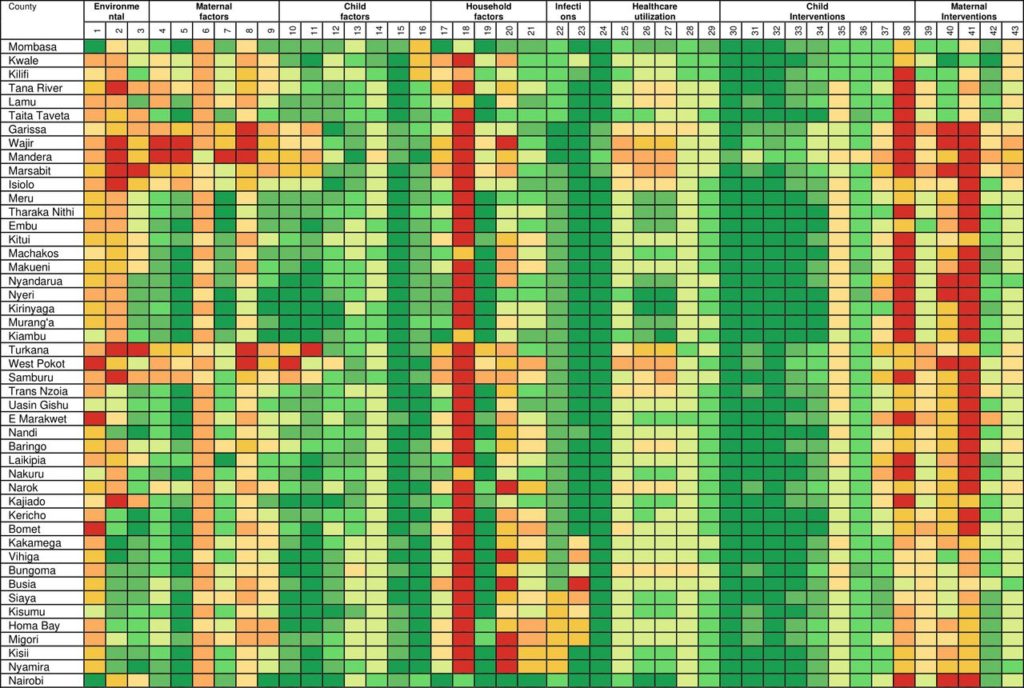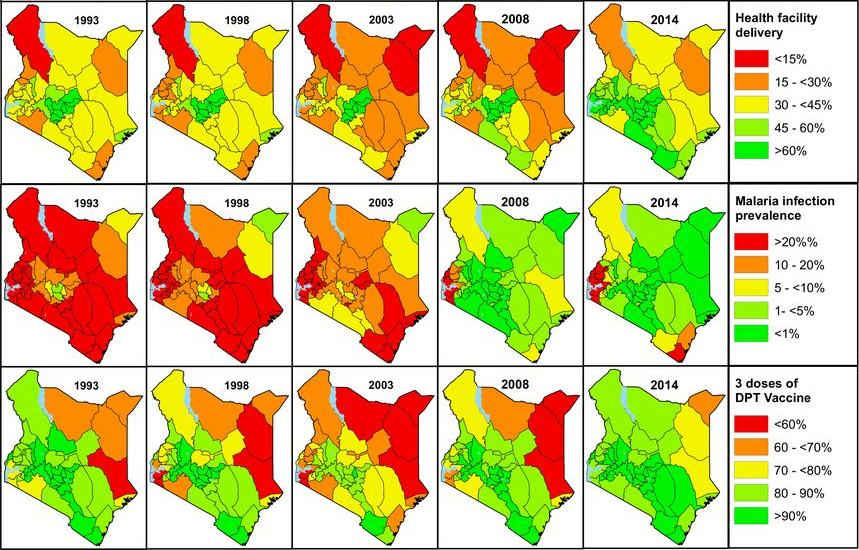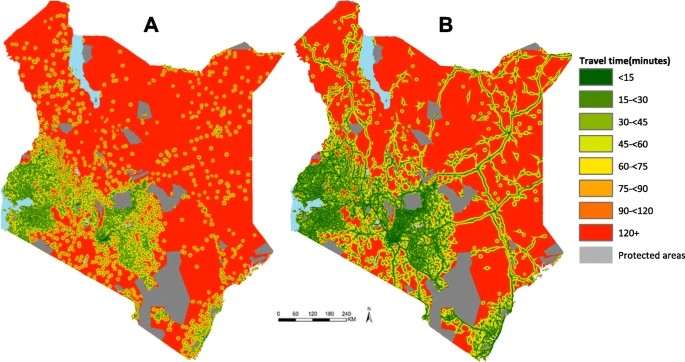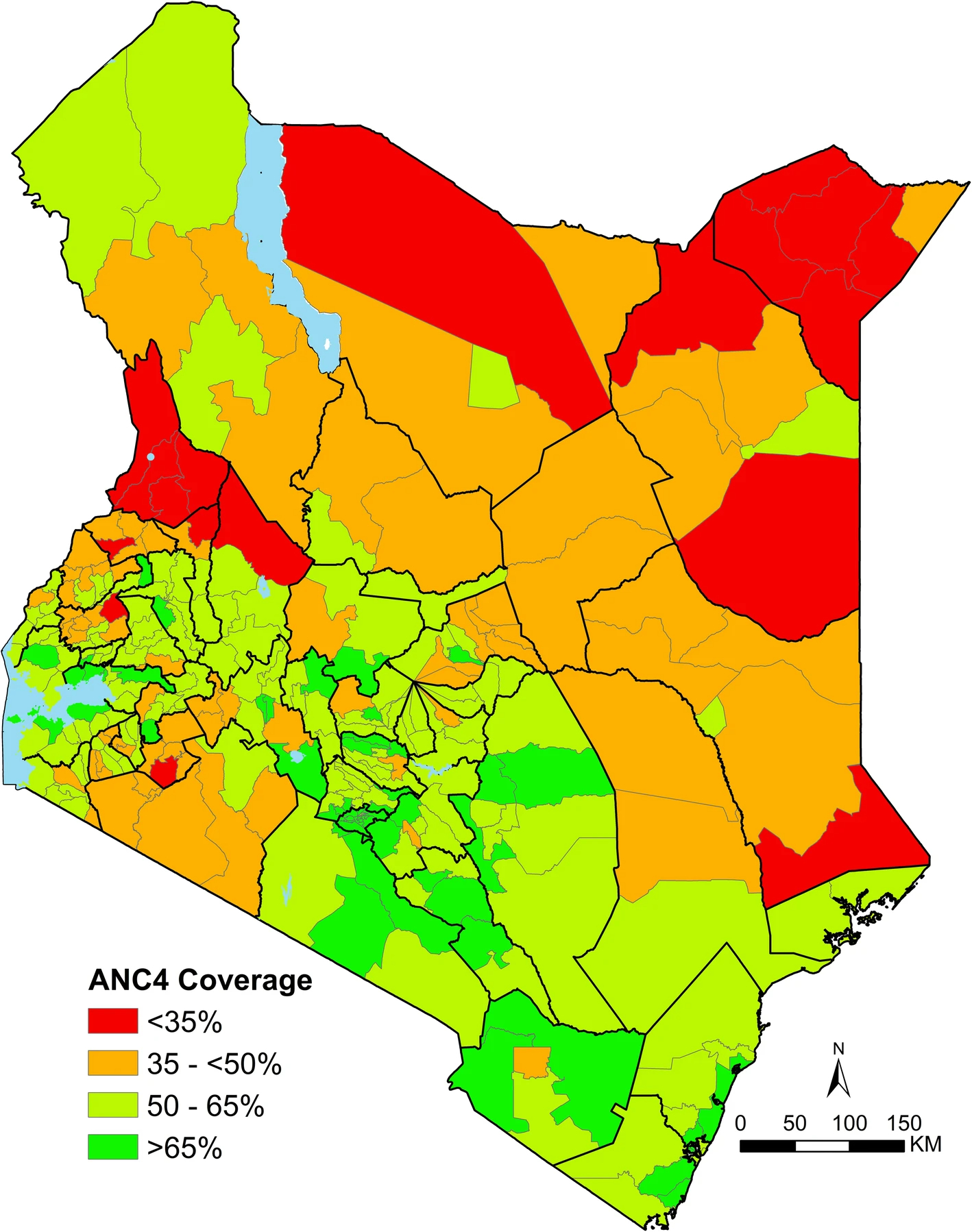Home / Research Themes
Maternal and Child
Maternal and Child
Countries have routinely monitored the coverage of interventions and utilisation of services to improve progress towards achieving Maternal and child health goals. Governments and various initiatives have tried to understand their predictors at a national and regional level by leveraging varied data source surveys. Our work aims to extend these approaches to provide evidence of inequity in access to interventions at a subnational level by applying model-based geostatistical methods, small-area estimation models and a range of spatial analysis techniques. We analyse data on coverage of health interventions across socioeconomic status, gender, education, and geography and critical drivers of change such as policy, finance, and other health system dimensions.

Ranking of factors associated with child survival in 2014 from low intervention coverage or high disease prevalence (red) to high intervention coverage or low disease prevalence (green).




